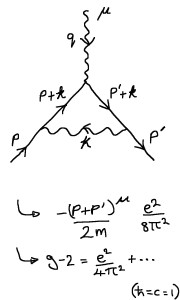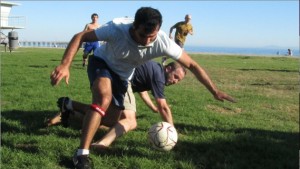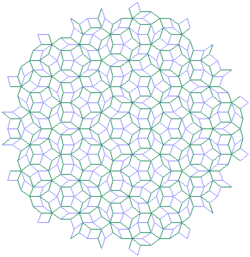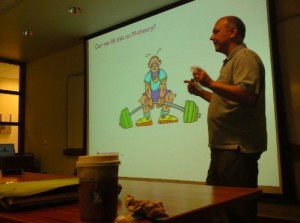QFT Rocks!
I’m having a blast teaching the introductory quantum field theory class, as you may have gathered from several previous posts. It has been taking a lot of time, but I’ve been doing detailed computations with the students (and hence taking up a lot of preparation time) to make sure they really get how to compute in a quantum field theory (such as Quantum Electrodynamics (QED)) and see how it connects to the real world. Having spent time on the electron anomalous magnetic 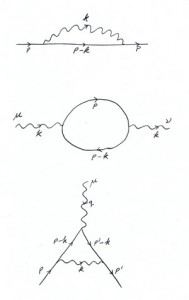 moment computation (I told you about that spectacular feature of QED earlier) we went back to basics to discuss in more detail the nature of the physics that is to be extracted from what are called one-loop diagrams – diagrams of the sort I drew before that have a closed loop in them.
moment computation (I told you about that spectacular feature of QED earlier) we went back to basics to discuss in more detail the nature of the physics that is to be extracted from what are called one-loop diagrams – diagrams of the sort I drew before that have a closed loop in them.
This is where I get to try to clear up a huge conceptual issue that still afflicts most people’s popular-level knowledge of quantum field theory due to poor writing – the nonsense often spouted about there being “hidden infinities” and so on and so forth. Covering the poorly-named “renormalization” procedure and treating it in a more physical way to see that the whole “infinity” business is dreck can be fun, since it allows for an emphasis on a lot of the key issues I care about in the science that we do, such as the idea of effective field theory, the importance of separation of scales in your physics, and most importantly the reminder: Let’s not confuse the tools we use to describe Nature with Nature itself.
I like to use that phrase, and it comes back again and again, whether it is to do with […] Click to continue reading this post


